Is A Team Equal to the Sum of Its Parts?
At first flush, it would seem natural to accept from Physical Science the commonly thought and applied axiom that states, “The whole is equal to the sum of its parts.” And a casual spectator or an ardent sports fan is usually in agreement with the notion that the team that amasses the most physically talented players has the best chance to win the most games and the championship of the sport for which it is assembled. But sometimes factors governing both “compatibility” and “incompatibility” enter the picture, and without “rhyme or reason,” the team with the most physical potential does not win as often as expected, 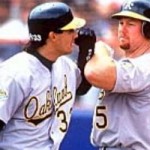 and the team without the so-called “super-stars”
and the team without the so-called “super-stars”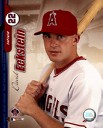 sometimes wins the championship, or comes awe-fully close. Even teams with the usual positive compatibility factors are not assured of the complete success that would be expected of them, possibly due to injuries, or perhaps the subtle and insidious lack of understanding of what truly constitutes a mental attitude that would preclude all or any thought of failure.
sometimes wins the championship, or comes awe-fully close. Even teams with the usual positive compatibility factors are not assured of the complete success that would be expected of them, possibly due to injuries, or perhaps the subtle and insidious lack of understanding of what truly constitutes a mental attitude that would preclude all or any thought of failure.
If your team is merely thought of as “equal” to the sum of its physical parts, it is not going to be as good as it could be. If built upon the basis of mortal imperfection, that team cannot effectively challenge the indefensible elements of worldly inconsistency (sands of Time and Space). As physical man is merely the outer extension of the larger portion of himself, what and how is it that each individual can perform at an optimum level of competency – beyond the resistance of mortal limitation?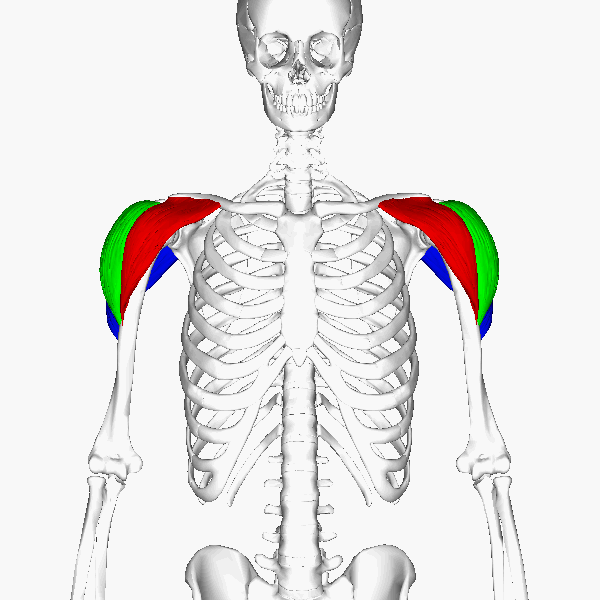
In Physics, a unified field theory is an imagined “ideal” that would allow all that is usually thought of as separate fundamental forces and elementary particles to be written or applied in terms of a single field and to ultimate into a “unified-equal- experience.” The term “unified field theory” was coined by Einstein, who attempted to unify the General Theory of Relativity with Electromagnetism which in turn would proceed to incorporate four seemingly distinct forces into One: “strong interaction, weak interaction, electromagnetic interaction, and gravitational interaction,” and eventually provide a practical application.
From a solely “material-basis” it is impossible to form a cogent, unified theory from which to incorporate a singular harmonious effect because it appears that innumerable causes are influencing each other in contradictory ways to effect conflicting purposes.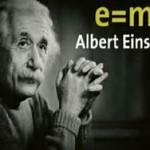
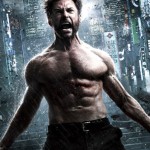
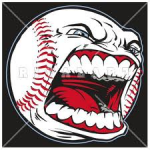
On a Universal level, all the components that make up the Whole physical world are the constituents of varying degrees of evolution and are derived from a Source completely “non-physical,” but none-the-less whose essence projects and extends Its Intent for Infinite expansion into perpetuity. And in modest micro-cosmic order, the body of that which is identified as man is a singular “unit” of function, but composed of trillions of individual cells whose harmonious vibrational unity and cohabitation affects the optimal functionality of the entire organism.
And what is it that determines the common frequency of vibrational communication within the cellular network to assure the Organism of perfect health and functionality but a seemingly “remote” and intangible Source from whose infallible intelligence can best direct and control the operation of life with inexhaustible and impeccable precision.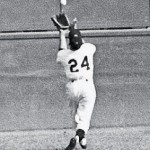
On any team, it is generally conceded that “teamwork” is a primary consideration when evaluating the team as an efficient and proficient “Unit.” The real essence of that factor of compatibility from which any challenging situation may be reduced to a solution through cooperative endeavor is teamwork! Compatibility is a substantive alliance between two or more distinct entities to promote harmony. Cooperation is the only feasible means to procure and establish an effective sense of Teamwork!
Therefore, as it would be insufficient to say that “the whole is equal to the sum of its physical parts,” so it would be as imprecise to say that the “team is equal to the sum of its individual parts,” simply because the “sum-total” of all the constituents included within that whole, although integral to the verification of its Physical Completeness, does not account for the intangible and invisible essence from which the Whole derives the integrity of its own intractable adhesion, cohesion, and attraction. For, “that which is seen is not made by that which does appear.” Therefore, “the Wholeness of the Team is greater than the sum of its separate parts.”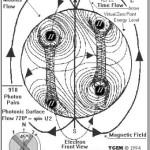
Now! In a professional Sport, as Major League Baseball, how is the Team “greater than the sum of its parts”? In examining this question we must first be certain not to misconstrue the ideal premise by implying that any individual can become expendable for the “good of the team.” A “sacrifice” bunt simply enhances the credibility of the “bunter” as an “integral” part of the team. Even a “sacrifice” ground-out to the right side of the infield to move a runner from second over to third is a selfless act appreciated and applauded by teammates as well as admired by the “opposition,” while the batter receives no augmented recompense to his batting average.
Even if a team executes perfectly the fore-mentioned strategies 100% of the time, it is highly unlikely that it will garner championship status, if that is all that the players have to offer. But it is equally as unlikely that a team capable of such proficiency in one area of the game could not be as capable in other areas.
Once it is mentally affirmed that the Team is greater than the sum of its parts, how can this “imagined ideal” be made practical? When, and how, is it that the team is “greater than the sum of its parts”? When it (Team of players: individually and collectively) ceases to abide in the mental miasma of “imperfection,” and takes on the responsibility of “Perfection,” or at least to start from that Precise Premise – for Perfection is not only the goal, but also the “starting point” from which to attain its manifestation.
Therefore, in order to discern the quality of the “complete” Team, it must first be determined what the qualities of the individuals are that comprise the quality of Completeness that constitute the Whole Team. (A popular “spiritual – hymn” beckons all to, “Let there be Peace on Earth, and let it begin with ME.” In order for Peace, or Wholeness – Completeness, to occur on the Team, it must begin with ME.
The completeness of the Whole is predicated on the completeness of the individual(s). Each player plays an important role in completing the Whole, but will do so only if he understands how to facilitate his own completeness and enhance an expanded essence to the integrity of the Whole.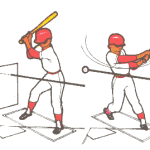
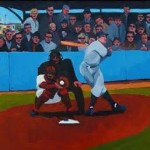
If each player on “the” team was 100% attuned to the prospect (frequency) of Perfection, he would presumably perform his actions on the ball field with 100% proficiency. Since it is improbable that this degree of perfection would be likely to occur in our present realm of general relativity, what would be the “actual” probability if each player would at least contemplate the possibility of such degree of competence? His performance rating would be in direct proportion to his mental alignment to positive expectation of success. 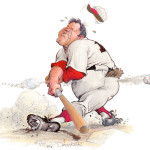 If success is not evident in the face of momentous failure, there would be cause to ask, “wherefore didst thou doubt?” (This is the point at which a Big League team would need the services of a “meta-physician” to assist the temporarily “unsuccessful” player regain the confidence in asserting his significant right to be successful.) SEE ESSAY: Vision, Mechanics, Confidence – (Important to the art of consistent hitting is Confidence, an intangible element acquired through an absolute faith in the principle from which a batter bases his ability to produce the stroke that can be applied consistently in any given hitting situation no matter how the speed and subtleties of the ball are effected).
If success is not evident in the face of momentous failure, there would be cause to ask, “wherefore didst thou doubt?” (This is the point at which a Big League team would need the services of a “meta-physician” to assist the temporarily “unsuccessful” player regain the confidence in asserting his significant right to be successful.) SEE ESSAY: Vision, Mechanics, Confidence – (Important to the art of consistent hitting is Confidence, an intangible element acquired through an absolute faith in the principle from which a batter bases his ability to produce the stroke that can be applied consistently in any given hitting situation no matter how the speed and subtleties of the ball are effected).
From a defensive skill-set, it would be very difficult to differentiate between the levels of skill of the “best” players at every position of all the teams in the Big Leagues! 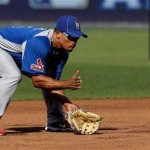
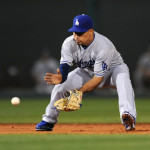
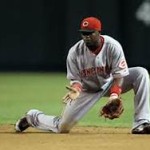

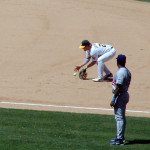 Those categories in which there seem to be noticeable differences in productivity rather than inherent fundamental abilities are: Pitching and Batting. With all defensive attributions seemingly equal, the team with the best pitching and hitting would be logically considered as having the best chance of winning.
Those categories in which there seem to be noticeable differences in productivity rather than inherent fundamental abilities are: Pitching and Batting. With all defensive attributions seemingly equal, the team with the best pitching and hitting would be logically considered as having the best chance of winning. 
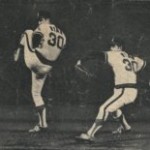 But even in this scenario, if those best of pitchers and batters fail to be at their best in timely situations, it won’t matter if their individual statistics are the best in the league, and the team fails to win consistently, that team probably will not attain its ultimate goal of “Championship.” (Why was the overwhelmingly powerful “Goliath” not successful against the seemingly puny “David” when all physical evidence pointed to his presumably insurmountable advantage? “There is a spirit in man, and the inspiration of the Al-mighty gives ‘them’ understanding.”)
But even in this scenario, if those best of pitchers and batters fail to be at their best in timely situations, it won’t matter if their individual statistics are the best in the league, and the team fails to win consistently, that team probably will not attain its ultimate goal of “Championship.” (Why was the overwhelmingly powerful “Goliath” not successful against the seemingly puny “David” when all physical evidence pointed to his presumably insurmountable advantage? “There is a spirit in man, and the inspiration of the Al-mighty gives ‘them’ understanding.”)
Is it possible for a team to win the Championship, whose batters and pitchers are not categorized as the best in the league? It’s possible, but highly improbable, even if their fielding stats are high! Unless, of course, their hitting, pitching, and fielding prowess was at their best and most consistent in the most timely of situations! Could such a team merely be “lucky” most of the season? Not likely! And certainly not the best way for any Big League Team to hold expectations for success in the long-run.
Consistency has always been and always will be the standard for which to be successful on the Major-League level of play (as well as in any endeavor in which Principle is consistently applied – in thought and action). But what is it that would determine the highest level of consistent proficiency for which every team would certainly aspire to attain?
Before defining the elements that would enhance the process of “Team-Building” in this modern baseball era, let me provide a practical anecdotal experience (or two), about which I had the pleasure of writing earlier:
Of all sporting activities (to watch and play) Baseball is still my favorite, even now-a-days, when its particular “rah-rah” fashion to evoke a pure spirit of camaraderie has waned somewhat. In the past, it would have elicited from all teammates, individually and collectively, an inspirational band of communication that connected all to each other in a common bond until the ultimate decision for victory or defeat was imminent.
As the game was played from childhood through adulthood, the constant chatter amongst teammates, on the field, or in the dugout, was reminiscent of the reverberations that stimulated the livelihood of all kindred creatures, from Humans to Meerkats. 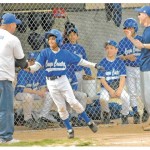 What’s missing in the Big-Leagues now is a collective reverence for the repetitious banter of inspiring incantations that continuously summon mind’s heart to display the emotions of passion, exuberance, and courage that will somehow manifest the jubilation and ecstasy that proceed from triumphal endeavor. Certainly this “irreverent” display is never to be witnessed in the stoic, immobile, or sometimes volatile demeanor of most contemporary “dugout” leaders.
What’s missing in the Big-Leagues now is a collective reverence for the repetitious banter of inspiring incantations that continuously summon mind’s heart to display the emotions of passion, exuberance, and courage that will somehow manifest the jubilation and ecstasy that proceed from triumphal endeavor. Certainly this “irreverent” display is never to be witnessed in the stoic, immobile, or sometimes volatile demeanor of most contemporary “dugout” leaders.
Traditionalist views of John McGraw and Connie Mack portray contrasting temperaments that elicited either fear or beneficence from the minds and hearts of the players attached to those regimes. But from where does true inspiration come? It should and will eventually come from within each intrinsically “motivated-inspired” player. But until such time, perhaps an exemplary figure, whose embodiment characterizes the source from which well-being emanates, will inspire his colleagues to supersede their present attributions and expectations!
On Saturday, June 28th, 2008, the Dodgers hosted a luncheon (and game afterwards) celebrating the 50th anniversary of the Los Angeles Dodgers, and commemorating the heroic players of the 1970s. My brother, Tom, was one of those players.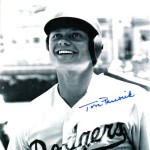 His words, about what playing for the Dodgers meant to him, echoed the sentiments of other players present, including Steve Garvey and Bill Russell. In short, they all offered respect and great appreciation for the man at the helm of each of their careers, the man who was, and is still the epitome of what the Dodgers, and Baseball itself, mean to Los Angeles and much of the World.
His words, about what playing for the Dodgers meant to him, echoed the sentiments of other players present, including Steve Garvey and Bill Russell. In short, they all offered respect and great appreciation for the man at the helm of each of their careers, the man who was, and is still the epitome of what the Dodgers, and Baseball itself, mean to Los Angeles and much of the World.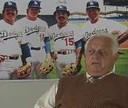
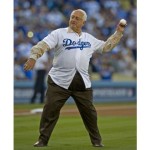

There is no one who has evoked the childlike spirit of inexhaustible exuberance, no one who embodied the ingratiating extent of joyful anticipation and exhilarating expectation of successful culmination than Tommy Lasorda.  “YOU’VE GOT TO BELIEVE” that every ounce of positive energy comes from the very Soul that created the Universe. And “YOU’VE GOT TO BELIEVE” that “I” am the very exponent of that Universal Source of Energy, the exemplification for all who find their way into the jurisdiction of my “realm of enthusiasm.” “YOU’VE GOT TO BELIEVE” that you too can generate unrestrained enthusiasm of a genuinely righteous Cause for success and victory.
“YOU’VE GOT TO BELIEVE” that every ounce of positive energy comes from the very Soul that created the Universe. And “YOU’VE GOT TO BELIEVE” that “I” am the very exponent of that Universal Source of Energy, the exemplification for all who find their way into the jurisdiction of my “realm of enthusiasm.” “YOU’VE GOT TO BELIEVE” that you too can generate unrestrained enthusiasm of a genuinely righteous Cause for success and victory.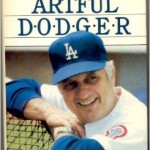
It would behoove all Organizations to follow the “Lasorda” example, for his “yoke is easy, and his burden is light.” His great appreciation for the opportunities he had been given had only inspired him to give more of himself, and to demonstrate that he had even more to give.
If you ever have been within the visual and audio range of Tommy Lasorda, as a player, spectator, or fan, you must have been impressed with the positive energy exuding from his very presence.
If you were an opponent, you may have felt enraged, however unwittingly, over the inherent “edge” any of his teams held over yours because of their incontestable advantage, the synergy due to his unfair alliance with the “gods” of majestic vibrational harmony. “You’ve got to believe” is a standard reference point from which all players should start their day with all the enthusiasm they need to further appreciate the opportunity to live life with inexhaustible energy.
Before the game on that Saturday, all the players of the 70s were introduced on the field, and received their just applause from an admiring crowd. But when the last dignitary walked onto the field of Dreams, a thunderous roar of Appreciation went out to the most beloved Dodger of them all –Tommy Lasorda, whose humble gratitude always goes out to the “Great Dodger in the Sky.”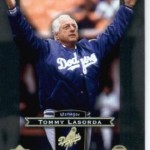
Coming Soon: Part 2 of, “Is the Team Equal to, or Greater than, the Sum of Its Parts”?